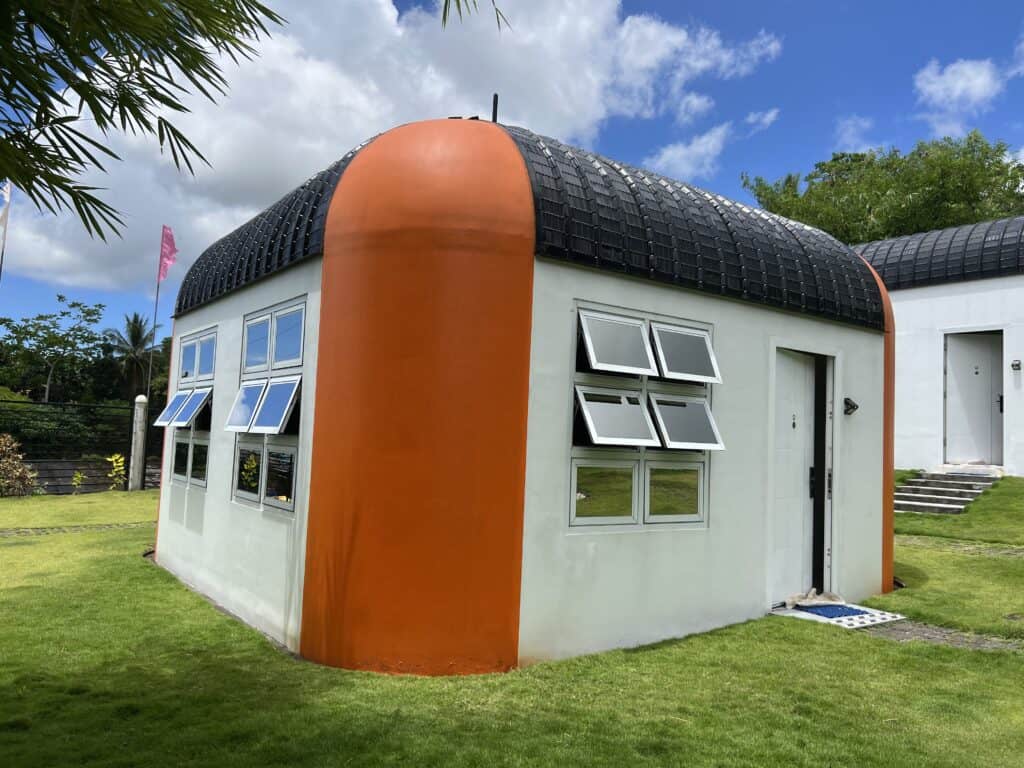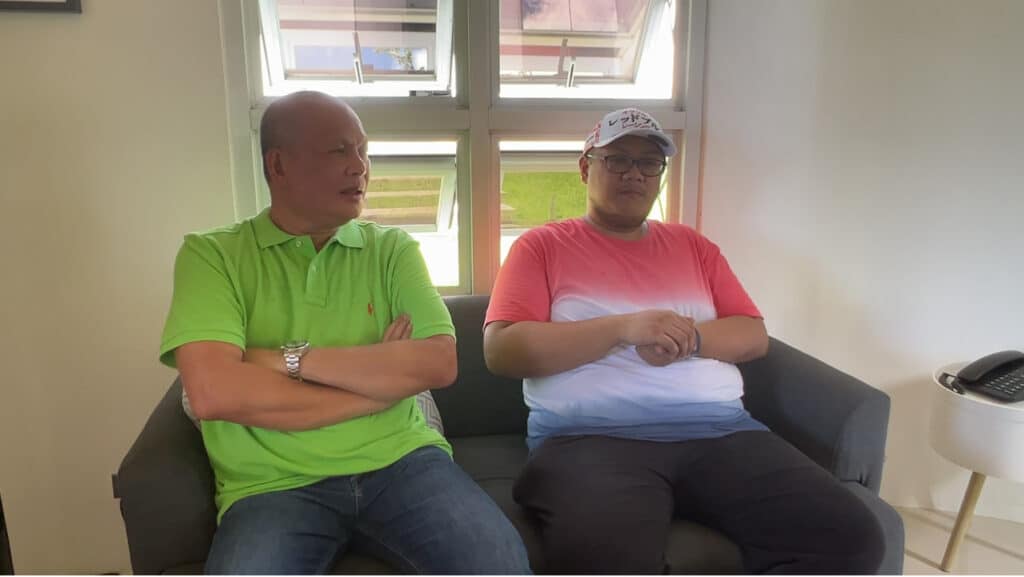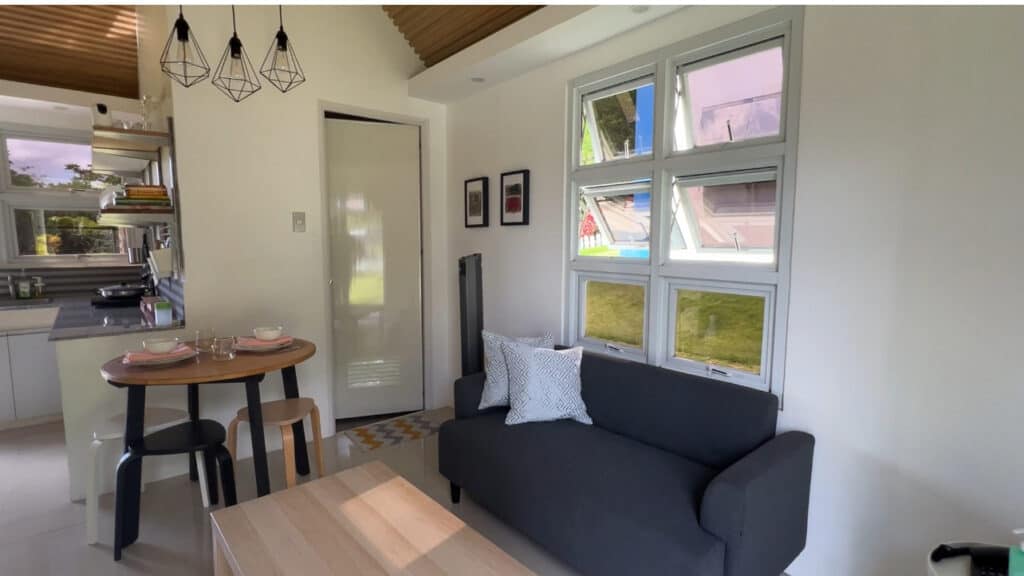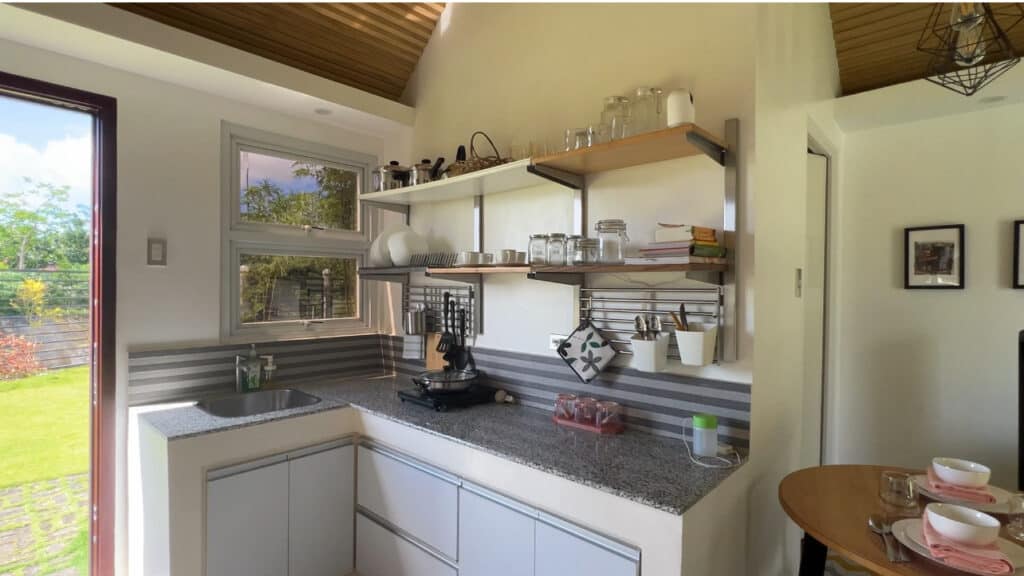Every family desires to have a shelter—a space where comfort and stability are the top priorities, an environment where they feel safe, secure, and at peace. A place that is free from a constant fear of losing everything whenever natural calamities arise. However, turning this dream into a reality does not depend on hope alone.
Gil Bien, a visual artist and industrial designer from San Jose, Malilipot, Albay, knows too well how it feels to lose a house whenever typhoons occur and hit the region.
Having seen the damage and understood the challenges faced by Filipino families in the aftermath of such events, Gil was inspired to create innovative housing designs that provide greater resilience and protection amidst typhoons.
In 2020, after the typhoon Rolly left thousands of houses destroyed across the Bicol region, Gil turned his aspiration into a reality by building a typhoon-resilient house, wherein he meticulously studied the impact of strong winds and identified the initial points of failure in traditional houses during typhoons.
Two prototype models called the “cuboid,” located in Malilipot, Albay, were launched last October 2022.


Tropically designed cuboid
In the Philippines, where records of intense heat and its effects among people are widespread, particularly at this time, having a safe and cooler place to live is essential.
One significant feature of the cuboid house is its ability to maintain comfortable indoor temperatures in tropical settings. With its aerodynamic and cornerless design, it offers potential benefits for addressing heat-related challenges.
This home has round corners, which not only reduce wind resistance during typhoons but also facilitate better air flow and ventilation, enabling it to maintain a cooler indoor temperature even under hot conditions.
In an interview with BicoldotPH, Gil said that the cuboid is designed specifically for a tropical setting like the Philippines, and ensuring that it is suited to this climate was a top design priority.
“Intended talaga siya pero ‘yong ventilation niya, medyo kinompromise namin kasi nagbigay kami ng mas malaking wave doon sa proteksyon sana sa bagyo. But we consider the design to be a set in a tropical setting, exactly in the Philippines. And design consideration—it’s already one of our already-highlighted design priorities,” Gil said.
(It was really intended, but we somewhat compromised the ventilation because we prioritized offering greater protection against typhoons. However, we considered the design to be suitable for a tropical setting, specifically for the Philippines, and ensuring this was one of our top design priorities.)
Thermo hygrometers have been strategically placed both outside and inside the cuboid house to monitor temperature variations. Upon monitoring, it can be observed that the indoor temperatures of the cuboid house remain consistently cooler compared to the outside environment.


Architecture graduate Renzo Bien, son of Gil, said that the typical indoor temperatures in the cuboid house range between 30-33 degrees Celsius, even when outdoor temperatures soar to 41-42 degrees Celsius.
During cloudy days, while outdoor temperatures might drop to 36–38 degrees Celsius, the indoor environment remains comfortably cooler, maintaining a difference of about 6–10 degrees Celsius, which indicates a lower temperature than outside.
In essence, although its main aspect might be typhoon resilience, how it is designed holds a great promise in dealing with tropical climate heat problems and provides a comprehensive approach towards creating comfortable and sustainable living spaces.
Long-term investment
Unlike traditional houses that often require frequent repairs, which can lead to repeated expenses, the cuboid house offers a more cost-effective solution in the long run.
As for Renzo, this cuboid house offers numerous advantages in terms of lifestyle and practicality with its modular structure, which makes it adaptable to the various preferences of a client.
“In terms of lifestyle, it’s compact; it’s secure, so let’s say you want that room [to] turn it to your office, kayang gawing office. If you want a larger bedroom, okay… Another thing, in terms of your properties, safe sila, so rather than pumasok ‘yong tubig dahil sa ulan, bumaha, nasira gamit mo at least with cuboid, as long as we are also advocating and also implementing that it’s build on the same area, there’ll be no damage,” he said.
(In terms of lifestyle, it’s compact and secure. So, let’s say you want to turn a room into your office; it can be done. If you want a larger bedroom, that’s okay too. Another thing, your properties will be safe. So, rather than water coming in because of the rain, flooding, and damaging your belongings, at least with the Cuboid, as long as we are advocating and implementing that it’s built on the same area, there will be no damage.)
Furthermore, the cuboid house is designed for durability and efficiency. It eliminates many of the components that typically require frequent maintenance and replacement in traditional houses.
The initial price for these innovative cuboid houses starts at 1.8 million to 3 million pesos. Although this initial cost may be higher than conventional houses, the long-term benefits of durability and reduced need for repairs make it a wise investment.
In addition to saving money over time, this creates a more dependable and trouble-free living space, so investing in a cuboid house allows one’s family to escape from having long-term costs, making it more convenient for homeowners.
What’s more to look forward to?
Having the desire to make a difference not only in the areas of Bicol, the team behind this cuboid house is now preparing for a new project lined up to kick off next year in Isabela. They mentioned that this project involves the establishment of a school wherein they will apply their innovative design. They also emphasized that their primary goal is to address the prevalent challenges faced by educational institutions, particularly in rural areas where class disruptions following natural disasters, like typhoons, often lead to temporary closures for repairs.
“It will be a great start because we want to improve the learning and experience for students. One of the major factors is that, especially if you were in a province in public schools na kapag bumagyo, walang pasok for a while kasi inaayos pa school niyo so we wanted to eliminate that. Gusto namin steady yung learning niyo and we also wanted the safety,” Renzo said.
(It will be a great start because we want to improve the learning experience for students. One of the major factors is that, especially if you’re in a province and attending public schools, classes are often canceled for a while when a typhoon hits because the school needs repairs. We wanted to eliminate that. We want your learning to be continuous, and we also want to ensure your safety.)
In terms of the structural integrity of the cuboid house, Renzo is confident that it underwent extensive analysis and approval by architects, civil engineers, and electrical engineers who studied its design at length to ensure that it meets the standards certifying its reliability.
“Our cuboid has been backed by an architects so these structures of ours, na-study nila, na-check nila and we’ve been given a go signal, we’ve also get a tests by civil engineers and electricals so our house is really down to the papers,” Renzo claimed.
Although it has been backed up by some professionals, Renzo stressed the importance of considering the location where a cuboid structure will be built. While acknowledging that the choice of location ultimately lies within the client, he offers a crucial suggestion to those seeking a suitable lot.
“Ang suggestion lang talaga namin sa mga client na naghahanap ng lote, huwag lang bahain at wag yung dinadaanan ng tubig or any landslide-prone areas because, kahit i-factor mo lahat ‘yan sa design, that kind of catastrophe could still not be avoided, so it’s better to find a safer place,” Renzo said.
(Our suggestion to clients looking for a lot is to avoid flood-prone and water passage areas, or any landslide-prone areas, because even if you consider everything in the design, that kind of catastrophe could still not be avoided, so it’s better to find a safer place.)
While it may seem daunting to achieve a dream of a safe and stable home, there are potential ways to make it a reality. Through wise decisions, one can achieve a house that is more than just a shelter. | Lyzha Mae Agnote



